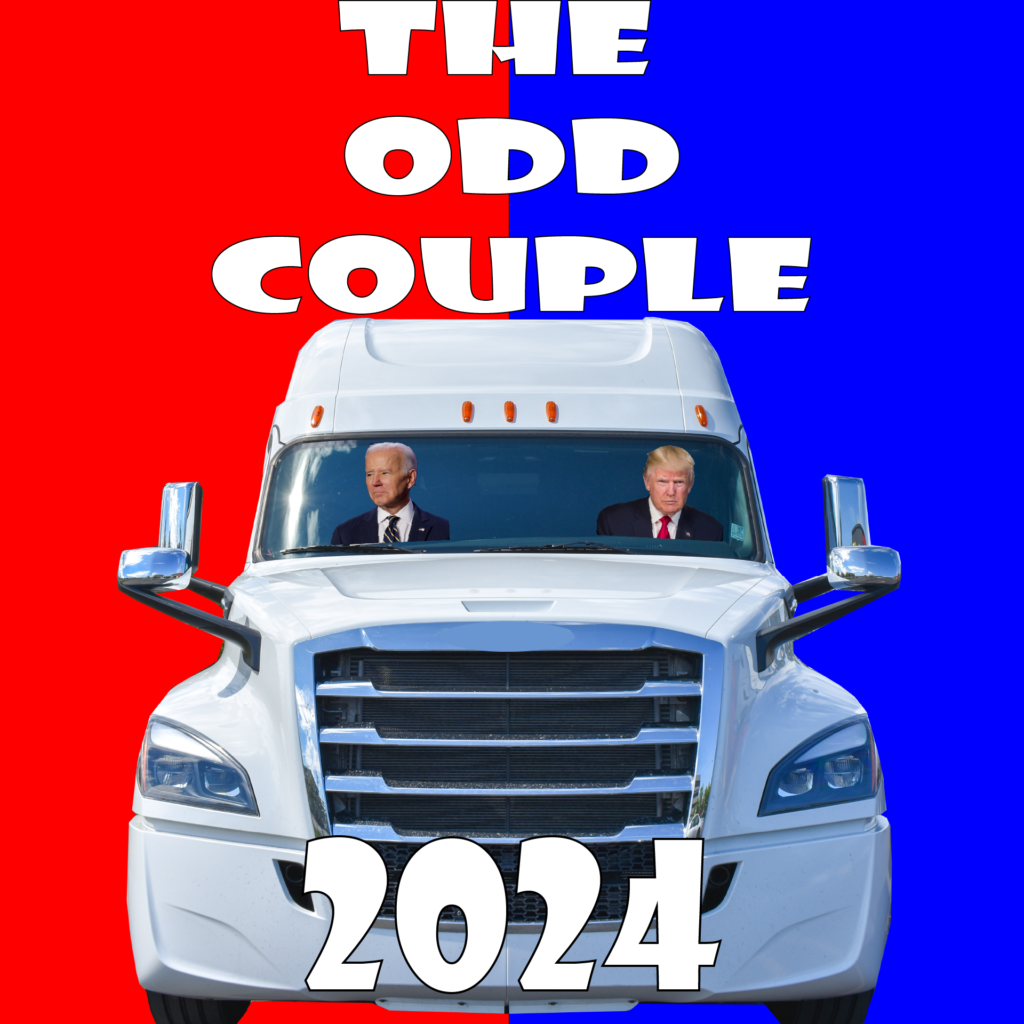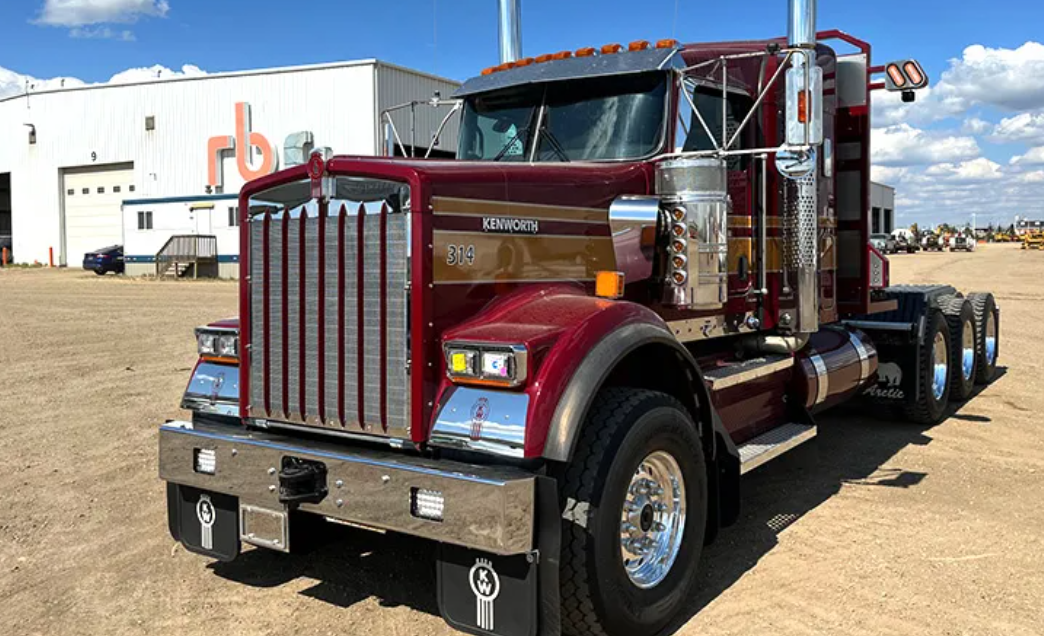Written by: Bloom Services

Every four years we have a presidential election, with these elections comes a wide range of promises, political rhetoric, and fiscal policies that affect our pocketbooks for better or worse. However, it is important to note that presidential administrations are not responsible, congress, courts, and other market pressures also affect the economy. The economy may be difficult to predict, but presidential administrations do affect the trucking industry in direct and indirect ways.
So, how do presidential administrations affect the trucking industry, and would Trump or Biden be better for the trucking industry?
The Trucking Industry and Deregulation Under Jimmy Carter
In 1980, under Jimmy Carter a mass deregulation of the trucking industry was initiated. The Motor Carrier ACT of 1980 sent waves through the trucking industry. Carter pushed for the act to bolster competition. The legislation effectively curtailed the influence of rate bureaus on a carrier’s ability to set its own fares. It significantly reduced the role of rate bureaus in rate determination, lifted many of the limitations on the types of goods that could be transported, and liberalized the routes and regions accessible to motor carriers. The act allowed trucking companies to adjust their prices within a defined “zone of reasonableness,” permitting them to raise or lower their charges by up to 15 percent without facing opposition. It also encouraged truckers to independently file for rate adjustments that exceeded this range, promoting larger price variations.
An intriguing outcome of this act was its implementation in a manner that leaned more towards fostering competition than originally anticipated. The emphasis on independent pricing and ease of market entry was essential for cultivating competition, leveraging the inherent dynamics of the trucking industry. Under the leadership of Darius Gaskins, who chaired the Interstate Commerce Commission shortly after the act’s adoption, there was a significant relaxation of entry regulations. The Commission adopted a liberal interpretation of the act to permit contract rate negotiations without the need for regulatory oversight and facilitated the growth of transport brokers. This development enhanced the alignment between the demand for transportation services and the supply of carriers.
Prior to the enactment, the industry’s standard practice was to offset increased wages and operational costs by charging shippers more. However, the repercussions of the law were profound, leading to a decrease in consumer-packaged goods prices, intensified price competition among carriers, and reduced profit margins.
After the Motor Carrier ACT of 1980
The Motor Carrier ACT allowed for the creation of more carriers and increased competition. It helped manufactures to move products more quickly and consumers benefitted from the increased efficiency and lower costs. However, unions, love them or leave them, suffered as transportation unions no longer held the power and an iron grip on the trucking industry. By 1990 the number of carriers more than doubled to over 40,000 today, there are nearly 500,000 trucking companies, and if you include owner-operators, there are over a million carriers today.
In some ways the Motor Carrier ACT was a remarkable success, but overall wages for truckers dropped mostly due to unions losing sway over the industry, and a huge flux of new truckers entering the industry. With more competition for freight, carriers’ profit margins decreased. Overall, the winners of the Motor Carrier ACT are the consumers and manufacturers, and the boom and creation of more freight brokers.
With a single signature of a president and an administration pushing for change, the trucking industry changed overnight for the better or worse. This might have been the single most significant piece of legislation to have changed trucking, but other administrations have enacted other rules and regulations, further cutting into the profits and earnings of individual truckers.
Obama Administration and Introduction of ELDs and reduced HOS
The Obama Administration affected the trucking industry with the introduction of ELDs and new, “hours-of-service,” HOS regulations. Before the Obama Administration, the HOS was set at 82 hours a week, under the Obama Administration, this was reduced to 70 hours a week. It was argued it would make the trucking industry safer and reduce fatalities in truck crashes. The introduction of ELDs and reduced HOS unfortunately had no such effect as fatal truck crashes have increased since the introduction of both ELDs and HOS regulations. All this regulation has increased operating costs, administrative costs, and overall reduction of trucker wages and carrier profits.
The Obama Administration trucking and EPA regulations increased the overall running costs for trucking companies. Truck manufacturing alone had a cost increase of over 8 billion. It also increased the cost of diesel fuel, the cost for new trucks, and other additional costs to individual truckers.
Trump Administration and Tax Cuts and Jobs Act in Trucking
Trucking under the Trump Administration, saw minor changes in trucking, with some of his bigger proposals unable to be enacted. The Trump administration, set out to ease the rest regulation for truckers, however it wasn’t implemented until the pandemic hit.
The Trump Administration had a notable impact on the trucking industry through a combination of regulatory reforms and economic policies. One of the key aspects was the administration’s approach to deregulation. The Trump Administration sought to reduce the regulatory burden on businesses, including those in the trucking sector, by rolling back regulations deemed unnecessary or overly burdensome. This included efforts to modify hours-of-service (HOS) rules, which dictate how long truck drivers can operate before taking required rest breaks. The aim was to provide greater flexibility to drivers and trucking companies, potentially increasing efficiency and reducing operational costs.
Moreover, the Trump Administration’s tax reforms, particularly the Tax Cuts and Jobs Act of 2017, had a significant impact on the trucking industry. The reform lowered the corporate tax rate, which benefited many trucking companies by increasing their profitability. This, in turn, could lead to investments in fleet expansion, technology upgrades, and potentially higher wages for drivers. However, the administration’s trade policies, including tariffs on imports from China and other countries, introduced uncertainties and challenges. These tariffs impacted the cost of goods, including vehicles and parts, which could increase operational costs for trucking companies. Additionally, trade tensions could affect the volume of goods needing transportation, potentially impacting demand for trucking services.
Overall, the Trump Administration’s policies created a mixed landscape for the trucking industry, with deregulation and tax reforms providing benefits to some extent, but trade policies introducing challenges that could offset some of these gains.
If Trump wins the 2024 election, he will continue his campaign promises, with lowering taxes and easing trucking regulations and preventing new regulations.
Biden Administration and EPA and Diversity Push in Trucking
The Biden Administration has implemented and proposed various policies with significant implications for the trucking industry, reflecting its broader agenda on labor rights, environmental concerns, and infrastructure development. One of the most contentious has been the push towards stricter regulations on labor, particularly affecting independent contractors—a staple workforce in the trucking sector. The administration’s efforts to redefine independent contractor classification aim to ensure worker protections but have sparked concerns within the industry about the potential loss of flexibility and increased operational costs for truckers who traditionally benefit from the independence of contractor status.
Furthermore, the Biden Administration’s ambitious infrastructure plan, part of the bipartisan Infrastructure Investment and Jobs Act, has brought a mixed bag of effects. On one hand, it promises substantial investment in repairing and upgrading the nation’s highways, bridges, and ports, which could ease some of the logistical challenges faced by the trucking industry. Improved infrastructure could lead to more efficient routes, reduced wear and tear on vehicles, and potentially lower operating costs overall. On the other hand, the funding mechanisms for these improvements, including any increases in fuel taxes or tolls, could directly impact the operating costs for trucking companies and independent truckers.
Environmental regulations under the Biden Administration have also seen a more aggressive push towards reducing carbon emissions, with implications for the trucking industry. Initiatives to accelerate the transition to electric and low-emission vehicles could lead to significant changes in the fleet compositions of trucking companies. While aiming for a greener future, these regulations require trucking companies to make substantial investments in modern technologies and infrastructure, such as electric charging stations, at a time when many are already grappling with thin profit margins.
If Biden wins reelection in 2024, we are likely to see more regulations affecting truckers, squeezing them further when it comes to pay and profitability. Biden is likely to continue to push for more diversity in trucking, encouraging more women to enter the industry, and lowering the age requirements.
Biden or Trump, Which Administration is better for truckers?
Which administration, Biden, or Trump, is better? This is a loaded question for sure, but the simple answer would be, it depends. The trucking industry has navigated a landscape of regulatory relaxation and economic policies under Trump versus a shift towards labor rights, environmental sustainability, and infrastructure investment under Biden. These contrasting policies reflect broader ideological differences between the administrations, with direct implications for the operational, financial, and strategic decisions facing trucking companies and workers alike.
If you are a business owner, or in a rental and lease-purchase program, Biden’s Administration won’t help your pocketbook much, more money will be spent on equipment, taxes, tolls, fuel, and reduced speed limits, and reduction of working hours. All of which will cause profits to suffer. If you are a W2 employee that works locally, then the Biden administration might offer more for those types of truckers, but only if trucker wages increase, which is unlikely under a Biden Administration.
Under the Trump Administration, it is likely that business owners and independent contractors will see increase profits and lower regulations, but this will also depend on freight markets because of economic policies.
Regardless of your political leaning, most independent contractors and those who want to become owner-operators don’t want more regulations and higher costs. If you vote with your pocketbook, Trump might far a bit better to your profitability.
Who is Bloom Services Voting For?
Here at Bloom Services, we are 100% voting for OTR truckers. We offer newer trucks, and cover trailer and cargo liability. We do not pay base on mileage, rather we pay 82% gross load. This is beneficial for strong drivers with a decent work ethic, you will earn based on the actual load rather than mere miles. Our drivers average $3,000 plus a week take home pay after all expenses, like fuel, truck rent, etc. If you have Grit, and the endurance to consistently deliver loads and run for at least three weeks at a time, you can take home $150K a year and earn our Vote! If you are interested, apply now.



office & Parking depot
5120 Belmont Rd Unit K, Downers Grove, IL 60515, USA
Hours of operation
Mon - Sun: 7am-5pm
